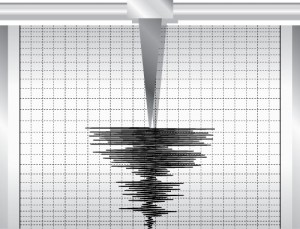 On the morning of July 4 there was a magnitude 4.2 earthquake just east of Eugene. The jolt shook everyone, but there was no significant damage to homes and businesses or the road system. The earthquake temporarily rattled nerves and it has renewed the conversation about “the big one” here in the Pacific Northwest. The Cascadia subduction zone, running off the west coast between California and Vancouver, BC is overdue for what is expected to be an 8.0–9.0 magnitude earthquake and accompanying tsunami. While it is important that we plan ahead to protect our homes and infrastructure from earthquakes, I wondered what we are doing to protect our digital assets. I decided to do some research.
On the morning of July 4 there was a magnitude 4.2 earthquake just east of Eugene. The jolt shook everyone, but there was no significant damage to homes and businesses or the road system. The earthquake temporarily rattled nerves and it has renewed the conversation about “the big one” here in the Pacific Northwest. The Cascadia subduction zone, running off the west coast between California and Vancouver, BC is overdue for what is expected to be an 8.0–9.0 magnitude earthquake and accompanying tsunami. While it is important that we plan ahead to protect our homes and infrastructure from earthquakes, I wondered what we are doing to protect our digital assets. I decided to do some research.
Data Centers In The Northwest
There are several data centers in the Pacific Northwest, primarily because of inexpensive power, relatively cool weather, abundant water, and a talented workforce. These data centers are operated by companies such as Google, Amazon, and Facebook. They were all built after we began to emphasize earthquake ready infrastructure.
New buildings are designed to withstand at least some lateral movement due to seismic activity. They are secured to the foundation and multistory buildings are heavily braced but they can still sway up to a certain amount to counteract the effects of an earthquake. The new data center for Oregon Health Sciences University (OHSU) for example is designed as a geodesic dome to “…provide superior resistance to seismic events.” While doing this research I came across an inventive solution in Japan that floats a home or building on air during an earthquake and then returns it to the foundation after the event.
Inside The Data Center
Servers inside the data center are often housed in seismic frame cabinets, which are anchored to the building but still allow for a minimal amount of movement. This keeps the server rack from falling over or dancing across the floor. Another option for flexibility is a product called ISO-Base, a two-part device that uses an isolation base. The bottom of the base is bolted to the floor and the top is bolted to the bottom of the server rack or cabinet. There is significant flexibility between the two levels of the base so in an earthquake the cabinet has controlled movement within the confines of the base. This means that cabling has to also be flexible.
Components that are seismic rated, including the backup generator outside, are tested on a shake table. This is a platform that simulates an earthquake and can test buildings or components to make sure they can withstand seismic force. The largest shake table is outside of Kobe, Japan and measures 65 x 49 feet and can hold structures weighing 2.5 million pounds. The shake table test is part of a seismic certification process for equipment, including computer infrastructure and components.
Thoughts
Computer centers in earthquake prone areas of the country have secured your cloud data as part of their business continuity plans. They employ several products and techniques to secure facilities, equipment, and data in the event the earth moves under their feet.
In a future blog post I will talk about products that let us secure equipment and data in our home office.
Kelly Brown is an IT professional and assistant professor of practice for the UO Applied Information Management Master’s Degree Program. He writes about IT and business topics that keep him up at night.

